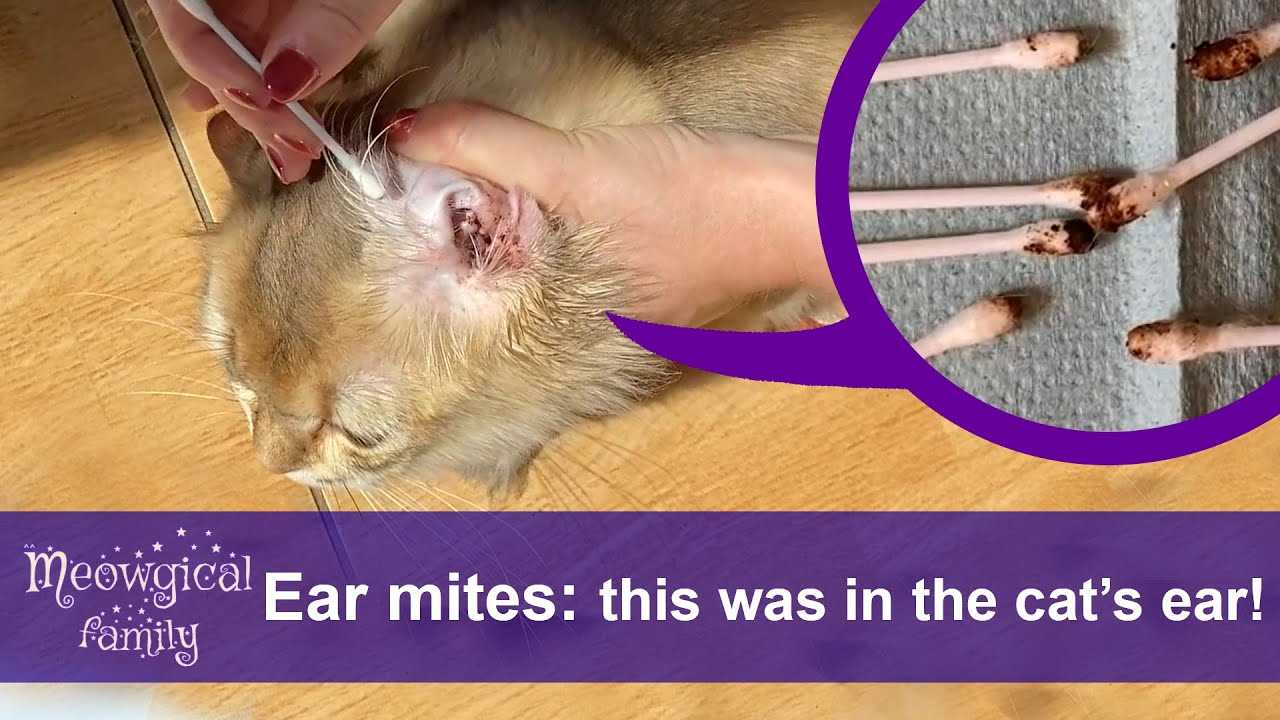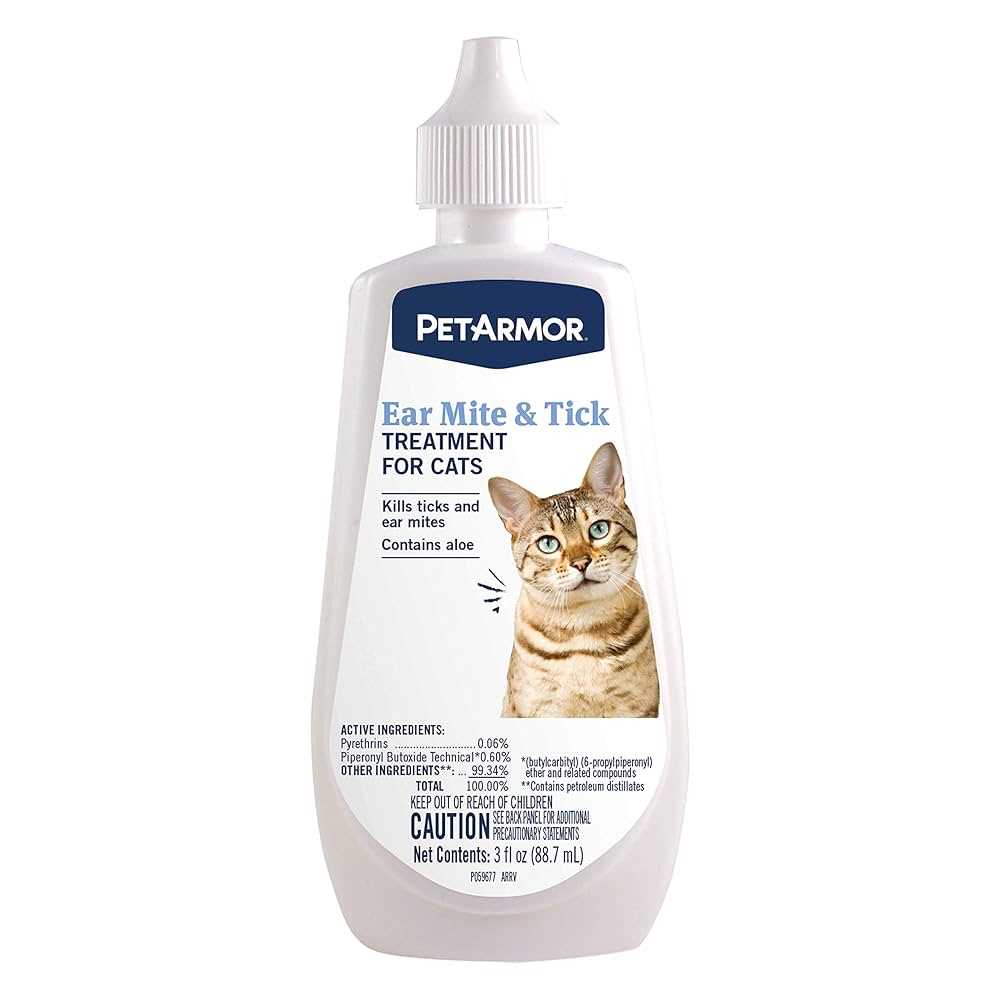To eliminate those annoying little intruders, start with a visit to the veterinarian. A professional examination ensures the right diagnosis and treatment plan tailored to individual needs. Medications prescribed may include topical treatments or oral solutions, specifically designed to combat these unwelcome guests.
Daily cleaning of the ear area is crucial. Use a vet-approved ear cleaner to gently remove debris and wax buildup. This not only aids in the healing process but also prevents further infestation. Always be gentle, as this area can be sensitive.
Keep the environment clean. Regularly wash bedding and toys to minimize the risk of re-infestation. Vacuuming areas where I spend time is also beneficial. Proper hygiene plays a significant role in preventing future issues.
Monitoring for symptoms like scratching or head shaking helps in identifying any recurrence early. Quick action can prevent further discomfort and ensure a speedy recovery. Consistent follow-up with the veterinarian is advisable to ensure complete resolution.
Treatment Steps for Ear Infestations
Start with a gentle cleaning using a vet-approved ear cleaner. Apply a few drops, massage the base of the ear, and then use a cotton ball to wipe away debris. This helps in removing any buildup and makes the next steps more effective.
After cleaning, administer prescribed medication directly into the ear canal. Follow your vet’s instructions carefully regarding dosage and frequency. It’s crucial to ensure the entire course is completed, even if symptoms improve early.
Monitor your furry friend for any signs of discomfort or adverse reactions. If you notice excessive scratching or swelling, consult your veterinarian immediately. Keeping track of your pet’s response to the treatment can help in adjusting the approach if needed.
In addition to topical treatments, consider anti-inflammatory options. Some products may help alleviate discomfort during recovery. You can find reliable options by checking reviews online, such as the best anti inflammatory for cats.
Regularly check the ears for signs of recurrence. Early detection can prevent a more serious infestation. Keeping the environment clean and monitoring interactions with other pets will help minimize the risk of reinfestation.
Identifying Symptoms of Ear Mites in Cats

Observe closely for signs that indicate a potential infestation. Common indicators include:
- Frequent scratching or pawing at the ears.
- Head shaking or tilting to one side.
- Dark brown or black debris in the ear canal, resembling coffee grounds.
- Redness or inflammation in the ear flap or canal.
- Unpleasant odor emanating from the ears.
- Excessive wax buildup.
If any of these symptoms are present, a closer inspection is warranted. Gently lift the ear flap and look for any abnormalities. If discomfort seems evident or if the symptoms persist, seeking veterinary assistance is advisable.
Behavioral Changes to Note

Changes in behavior can also signal a problem:
- Increased irritability or restlessness.
- Avoiding head pats or handling around the ears.
- Changes in grooming habits, such as neglecting ear cleaning.
Recognizing these signs early can lead to prompt action and a quicker return to comfort.
Choosing the Right Treatment Options for Ear Mites
Opt for topical solutions that contain ingredients like selamectin or moxidectin, which target these tiny invaders effectively. Administer these treatments directly into the ears as directed, ensuring thorough application to the affected areas.
Consider using ear cleaning solutions before applying medication. This helps remove debris and allows the active ingredients to penetrate better. Look for products that are safe and specifically formulated for feline use.
Oral medications can also be effective. Discuss with your veterinarian the possibility of using ivermectin or milbemycin, which may provide systemic relief. However, ensure these are prescribed based on individual health assessments.
For persistent infestations, a combination approach may be necessary. Regular follow-ups with your veterinarian will help monitor progress and adjust treatments accordingly.
Always prioritize safety. Avoid using products intended for dogs, as they can be harmful to felines. Read labels carefully and consult a professional if uncertain about any product.
Lastly, ensure a clean environment. Wash bedding and vacuum areas where I spend time, reducing the likelihood of reinfestation. Keeping my space tidy is as important as the treatments themselves.
Administering Medication for Ear Pests
First, ensure that you have a quiet space where I feel comfortable. It’s easier to manage the situation without distractions. Gather the necessary supplies: the prescribed solution, cotton balls, and perhaps a towel to wrap me gently if I squirm.
Next, hold the bottle in one hand and tilt my head slightly to expose my ears. Administer the recommended number of drops directly into each ear canal. Aim for the inner ear, but avoid touching the bottle to my fur or skin to prevent contamination.
After applying the drops, gently massage the base of my ear for about 30 seconds. This helps distribute the medication evenly and ensures it reaches deeper into the ear. I might shake my head or scratch, but this is normal.
Use a cotton ball to wipe away any excess solution or debris that might have surfaced after application. Be gentle, as my ears can be sensitive.
Here’s a simple schedule for medication administration:
| Day | Medication Dosage | Notes |
|---|---|---|
| 1 | 2 drops in each ear | Monitor for signs of discomfort |
| 2 | 2 drops in each ear | Keep environment calm |
| 3 | 2 drops in each ear | Check for improvement |
| 4 | 2 drops in each ear | Consider vet follow-up |
Stay patient throughout the process. Reward me with a treat or gentle petting afterward to create a positive association with the experience. Regularly check my ears for any changes or signs of irritation, and don’t hesitate to reach out to the vet if something seems off.
Cleaning Your Feline’s Ears Before Treatment
Before starting any remedy, ensure the auditory passages are clean. Use a vet-approved cleaning solution and cotton balls. Dampen a cotton ball slightly with the solution, avoiding soaking it. Gently wipe the outer part of the auditory canal, being careful not to insert anything deep inside.
Check for excessive wax or debris. If you notice a lot of buildup, it may be necessary to repeat the cleaning process a few times. Always follow up with a dry cotton ball to remove any remaining solution. This step helps the subsequent medication penetrate effectively and minimizes irritation during application.
Reward your furry friend with treats or affection post-cleaning. This can help them associate the process with positive experiences, making future cleanings easier.
Preventing Future Infestations of Ear Mites
Regular cleaning of my ears is a must. It helps remove debris and wax that can attract unwanted visitors. I recommend using a gentle ear cleaner designed for felines, ensuring it’s safe and effective.
Maintaining a clean living environment is equally important. Vacuuming often and washing bedding minimizes the risk of infestations. It’s wise to use flea treatments as a preventive measure, as these pests can carry ear parasites.
Avoid sharing personal items with other furry friends. Things like brushes, bedding, or toys can transfer unwanted guests. If I’m in contact with other pets, checking them regularly for any signs of infestation keeps me safe.
Regular vet check-ups are essential. My human should ensure I get examined periodically, even when I’m feeling fine. This way, any early signs of issues can be caught promptly. Additionally, staying aware of the signs, like scratching or shaking my head, allows for quicker action.
Lastly, a balanced diet supports a healthy immune system, making it harder for pests to take hold. Just like knowing where proteins are found in plants helps in maintaining my health, understanding nutrition is key to staying pest-free.
When to Consult a Veterinarian for Ear Mite Issues
If my scratching escalates, or if my ears show signs of severe redness or swelling, it’s time to visit a vet. A professional can assess the situation accurately and prescribe appropriate solutions.
Persistent odor coming from my ears, or the presence of dark debris resembling coffee grounds, indicates a need for expert evaluation. This could signal a more serious condition than a simple infestation.
In case of any unusual behavior, such as increased agitation or lethargy, seeking veterinary assistance is essential. Changes in my mood or activity levels can reflect discomfort that requires attention.
If treatment at home does not yield results within a few days, it’s wise to consult a vet. They can offer alternative medications or treatments that may be more effective.
Additionally, if I experience any signs of secondary infections, such as discharge or pain when touched, immediate veterinary care is necessary to prevent further complications.
For any concerns regarding the health of my fellow furry companions, particularly if they show signs of infestation, a visit to the veterinarian ensures everyone stays healthy and comfortable.
FAQ:
How can I treat my cat for ear mites at home?
To treat your cat for ear mites at home, you can start by cleaning its ears gently with a vet-recommended ear cleaning solution. This helps remove debris and allows the medication to work more effectively. After cleaning, apply a topical ear mite treatment prescribed by your veterinarian. Follow the instructions carefully, and be sure to administer the treatment for the full duration recommended, usually several days to a week. It’s also important to treat any other pets in the household to prevent reinfestation. Regular check-ups with your vet will help monitor the situation and ensure your cat’s ears are healthy.
Are there any risks if I don’t treat my cat’s ear mites?
If left untreated, ear mites can lead to more serious health issues in your cat. They can cause severe irritation, inflammation, and even secondary bacterial or yeast infections in the ear. This can result in chronic ear disease, hearing loss, or damage to the ear canal. Additionally, ear mites can be transmitted to other pets, leading to a wider issue in your household. Therefore, it’s advisable to seek treatment promptly to avoid complications and ensure your cat’s overall health and comfort.
What are the signs that my cat has ear mites?
Ear mites in cats can manifest through several noticeable signs. Common symptoms include frequent scratching or rubbing of the ears, shaking the head, and a dark, coffee-ground-like discharge in the ear canal. Your cat may also exhibit signs of discomfort, such as sensitivity when you touch their ears or an unusual odor coming from the ears. If you observe any of these symptoms, it’s important to consult a veterinarian for proper diagnosis and treatment.






